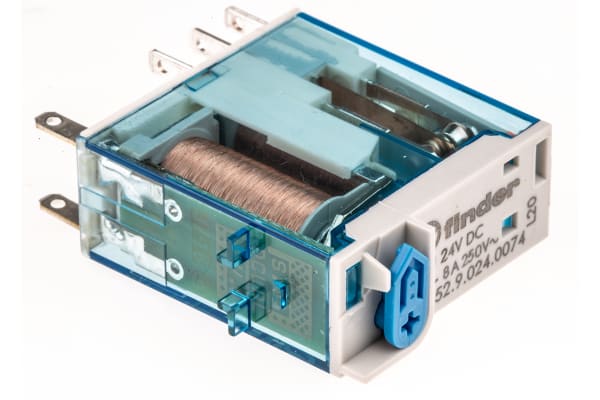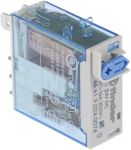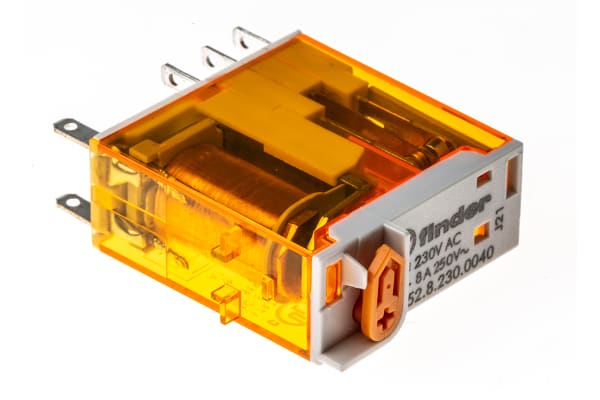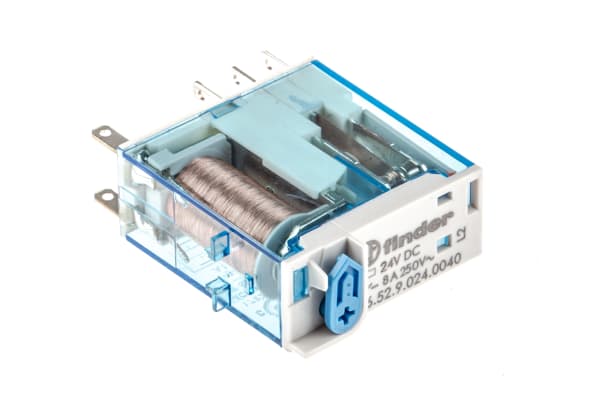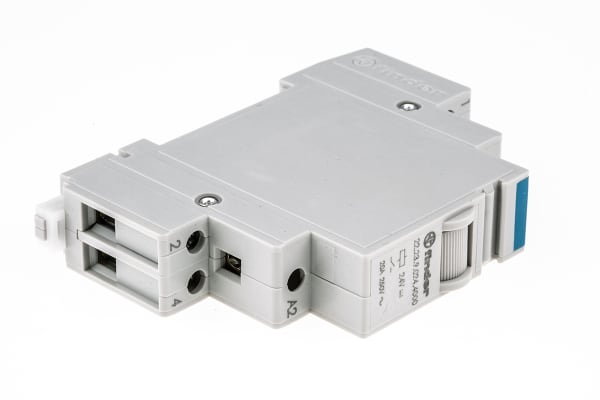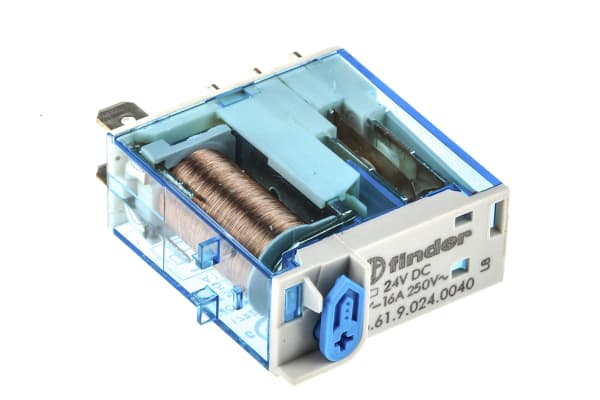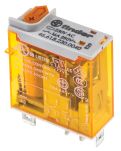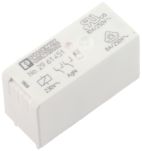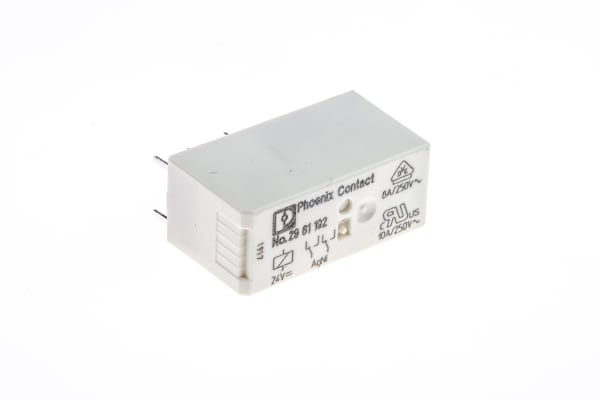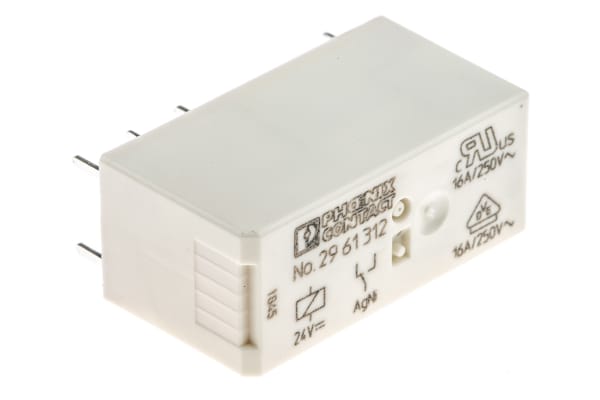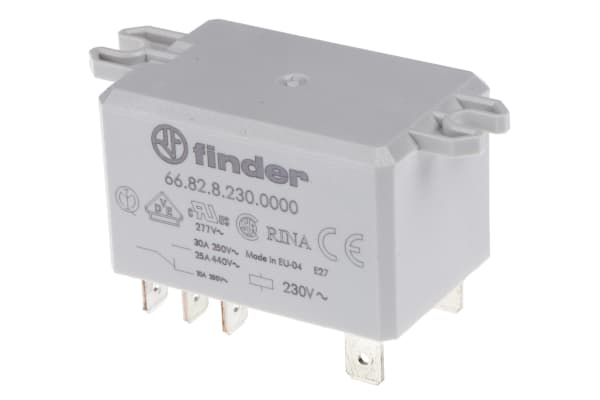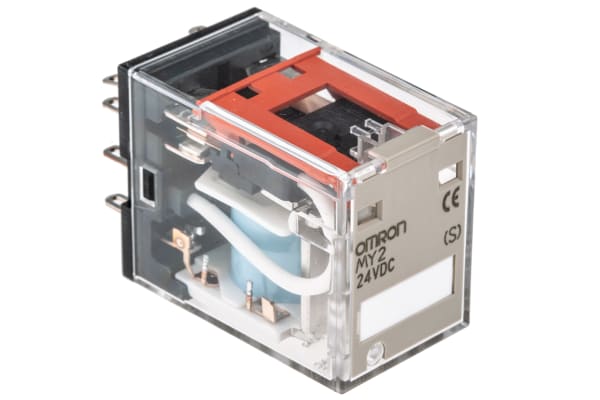Non-Latching Relays
Relays are electrical switches that are operated by electrical impulses with the primary function to open and close a circuit, they can also be referred to as industrial switches. There are 2 main types available, latching and non–latching relays.How do non-latching relays work?Non-latching relays are in a normally closed (NC) position and will stay in this state without power. When power passes through the circuit, the relay switched to a normally open (NO) position by using an internal coil to generate a magnetic force, holding this NO position. Once the current is turned off, it returns to the NC position. This makes non-latching relays well suited to push-button applications like keyboards and micro-controller input buttons.What are non-latching relays used for?Non-latching relays are highly durable and versatile components, making their performance long lasting and suitable for use in a wide range of applications, such as:Automotive enginesHousehold appliancesIndustrial machineryMedical equipmentTelecommunications equipmentWhat is the difference between latching and non-latching relays?Both types of relays in similar in design and function, however, a significant difference between them is that a latching relay will remain in the last position it when it was last powered, whereas a non-latching goes back to its normal position. This makes each more type of relay suitable for different applications. Considerations when selecting a relayWhen choosing a relay, it is important to consider a number of specifications to ensure it is fit for purpose, some factors include:Coil voltage – the required voltage to actuate the switching mechanism. If a voltage is too high this could damage the components, if it is too low then it will not actuate. Contact configuration – This is the state the contacts are in without power. For example SPST, single pole single throw.Contact material – the relay contacts are available in many materials that have certain properties. Common materials are gold, silver, tin oxide and nickel Coil power – the amount of power (watts) the coil operates at. This must match the power in the circuit for correct function. Coil resistance – the amount of resistance (ohms) in the circuit that the coil creates.
-
Finder, 24V dc Coil Non-Latching Relay DPDT, 8A Switching Current Plug In, 2 Pole, 46.52.9.024.0074
IDR177,998.33 -
Finder, 12V dc Coil Non-Latching Relay DPDT, 8A Switching Current PCB Mount, 2 Pole, 46.52.9.012.0074
IDR168,977.79 -
Finder, 24V dc Coil Non-Latching Relay SPDT, 16A Switching Current Plug In Single Pole, 46.61.9.024.0074
IDR162,159.94 -
Finder, 230V ac Coil Non-Latching Relay DPDT, 8A Switching Current Plug In, 2 Pole, 46.52.8.230.0040
IDR233,694.92 -
Finder, 24V dc Coil Non-Latching Relay DPDT, 8A Switching Current Plug In, 2 Pole, 46.52.9.024.0040
IDR153,873.63 -
PCH Series Relay, 10A 120Vac,24dc 200mW
IDR31,047.44 -
PCH SeriesRelay,1CO,10A 120ac,24dc 400mW
IDR31,676.78 -
PCH Relay,1CO,10A 120ac,12dc 400mW
IDR41,221.77 -
Finder, 24V ac Coil Non-Latching Relay 3PDT, 16A Switching Current Flange Mount, 3 Pole, 62.83.8.024.0000
IDR323,061.20 -
-10.00%
Finder, 24V dc Coil Non-Latching Relay SPST-NC, SPST-NO, 20A Switching Current DIN Rail, 3 Pole, 22.23.9.024.4000
IDR591,264.93IDR443,160.25 -
Finder, 24V dc Coil Non-Latching Relay DPNO, 20A Switching Current DIN Rail, 2 Pole, 22.22.9.024.4000
IDR600,600.14 -
Finder, 12V dc Coil Non-Latching Relay DPNO, 20A Switching Current DIN Rail, 2 Pole, 22.22.9.012.4000
IDR570,811.38 -
Finder, 230V ac Coil Non-Latching Relay DPNO, 20A Switching Current DIN Rail, 2 Pole, 22.22.8.230.4000
IDR449,243.87 -
Finder, 24V dc Coil Non-Latching Relay SPDT, 16A Switching Current Plug In Single Pole, 46.61.9.024.0040
IDR126,916.90 -
Finder, 12V dc Coil Non-Latching Relay SPDT, 16A Switching Current Plug In Single Pole, 46.61.9.012.0040
IDR122,721.30 -
Finder, 230V ac Coil Non-Latching Relay SPDT, 16A Switching Current Plug In Single Pole, 46.61.8.230.0040
IDR212,821.81 -
Phoenix Contact, 230V ac Coil Non-Latching Relay DPDT, 15A Switching Current PCB Mount, 2 Pole, 2961451
IDR273,028.67 -
Phoenix Contact, 24V dc Coil Non-Latching Relay DPDT, 8A Switching Current PCB Mount, 2 Pole, 2961192
IDR152,824.73 -
Phoenix Contact, 24V dc Coil Non-Latching Relay SPDT, 16A Switching Current PCB Mount Single Pole, 2961312
IDR133,000.52 -
TE Connectivity, 24V dc Coil Non-Latching Relay 4PDT, 6A Switching Current DIN Rail, 4 Pole, PT5S7LC4 1415076-1
IDR468,648.52 -
TE Connectivity, 5V dc Coil Non-Latching Relay SPNO, 3A Switching Current PCB Mount Single Pole, PCN-105D3MHZ
IDR74,996.35 -
Finder, 24V dc Coil Non-Latching Relay DPDT, 30A Switching Current Flange Mount, 2 Pole, 66.82.9.024.0000
IDR272,504.22 -
Finder, 230V ac Coil Non-Latching Relay DPDT, 30A Switching Current Flange Mount, 2 Pole, 66.82.8.230.0000
IDR307,747.26 -
Omron, 24V dc Coil Non-Latching Relay DPDT, 10A Switching Current Plug In, 2 Pole, MY2 24DC (S)
IDR175,900.53



